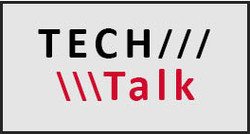By Jeff Weier
 One of the more common types of pheromones are sex pheromones. In 1959, the first insect sex pheromone, Bombykol, was isolated from the silkworm moth. Since then, hundreds of pheromones have been discovered for hundreds of insects. A few of these pheromones have been synthesized for commercial use to monitor for insects.
One of the more common types of pheromones are sex pheromones. In 1959, the first insect sex pheromone, Bombykol, was isolated from the silkworm moth. Since then, hundreds of pheromones have been discovered for hundreds of insects. A few of these pheromones have been synthesized for commercial use to monitor for insects.
Sex pheromones, like Bombykol, are volatile compounds produced by a female that are released into the environment and attract males. Males trace the plumes of pheromone back to the female by following a concentration gradient. Once they are near the female, they can mate and the female can lay her viable eggs, completing the life cycle.
With stored product moths, cigarette and warehouse beetles, completing the life cycle is how the population grows and infestation spreads.
Because of the strong attractiveness of sex pheromones, they can be used as lures in traps to capture male insects. Sex pheromones are the most effective, commonly used, lure to aid in the detection of activity for stored product moths, cigarette and warehouse beetles.
First, it works best on insects where the adult lives for a short period of time. Short-lived adults must find a mate and reproduce quickly if the population is to grow. In species with long-lived adults, confused males may still find females, but it takes more time.
Second, adults that feed little or not at all as adults are more vulnerable. These adults will use their energy reserves searching for females while confused.
Mating Disruption
The term “mating disruption” refers to the use of sex pheromones to confuse male insects so they cannot find females, thus preventing mating and suppressing the growth and spread of infestations. Mating disruption relies upon several features of the insect’s biology.
Third, adults that leave the food source every generation for mating flights are more vulnerable. Insects where the adults are packed close together in their food search will stumble across each other even if confused.
Mating disruption is currently developed and is working in the field for stored product moths such as Indianmeal moths, cocoa moths, almond moths, tobacco moths and Mediterranean flour moths. Since these moths share components of their pheromones, one pheromone works for all of them.
The plastic on this CIDETRAK IMM mating disruption dispenser from Trece is impregnated with the Indianmeal moth pheromone.
Mating disruption products consist of dispensers that contain large quantities of pheromone. These dispensers are placed in the area to be treated where they release strong plumes of pheromones. Male moths cannot differentiate between these “dispenser plumes” and plumes created by females. The confusion occurs as they follow these diversionary plumes, exhausting themselves before they can mate. Since these products modify insect behavior and are intended to control the pest, they are, by definition, pesticides and are registered with EPA even though they do not actually kill anything.
Pheromone monitoring traps always should be installed in the area where a mating disruption program is set up. Since a pheromone trap essentially mimics a female moth, mating disruption should reduce or eliminate captures in pheromone traps. This is called “trap shutdown” and is an important way to measure the effectiveness of your program.
Important factors to consider in mating disruption programs include use of the proper dose. Product labels give a range of dosage, and it is generally best to start in the middle of the range and monitor for trap shutdown. If trap shutdown does not occur, add more dispensers up to the maximum label rate. Be sure to check how the dosage is calculated — some products use cubic footage and others use square footage, which will impact testing.
The introduction of mating disruption is, arguably, one of the most significant advances in stored product moth control since methyl bromide was introduced as a space fumigant. Learning how to use it can truly make your pest management program more efficient and effective.
As a Board Certified Entomologist with 40 years of pest management experience, Jeff Weier, BCE, is director of technical services and training for Sprague Pest Solutions, Tacoma, Wash. An accomplished speaker, trainer and author on pest prevention, stored food pests, mating disruption and sanitation, he is a member of the Copesan Technical Committee.
Copesan is an alliance of pest management companies with locations throughout North America. To learn more, visit www.copesan.com.
